
The Tieflings of mainland Abios are outcasts, exiles, or in most cases escaped slaves. Abian Tieflings occupy the region referred to as The Emerald Basin, Xeshana and even Ospaña, while a few can be found in remote areas throughout Abios. These Tieflings are typically escaped or runaway slaves that have fled into the wilderness in order to survive, and do so by whatever means possible. Tieflings are often shunned or considered with suspicion in the good kingdoms due to lack of knowledge and understanding of the race, while those in the tyrant kingdoms are either enslaved or hunted for sport.
Due to their survivalist nature, mistrust of other races, and tales of their kind seeking revenge for the wrongs done to them, most races of Abios purposefully avoid interacting with Tieflings. Even the citizens in the good kingdoms of Abios tread carefully around these individuals, and instances of xenophobia or harassment to lone Tieflings are common.
The Tieflings of mainland Abios have no special demonym for their ethnicity since most have had any semblance of culture beaten from them during enslavement. They are simply known as Tieflings. Those that have escaped and formed their own communities typically practice the customs and culture of those that owned them. Most Tieflings living free are gathered in such small communities that culture has very little time to develop, with the people concentrating simply on surviving and staying hidden.
Tieflings tend to be nomadic out of living in constant fear and being pursued. They rarely form permanent settlements, living in tents or yurts that can be quickly disassembled and moved in a relatively short amount of time.
Tiefling society is filled with suspicion and paranoia towards all races, however underneath their mistrustful and cautious veneer lies a people who are kind, caring, and hospitable to established friends. Outsiders who are welcomed into their society are expected to pull their own weight, either by contributing through talented skill or imparting expert knowledge to the group. Anything that can bolster the colony's chance of survival is viewed as paramount in the collective effort to survive.
The behavior of Tieflings still in bondage is as one would expect; show obedience through submission and respect, even to other Tieflings (who may be acting on their master or mistress' instruction). These unfortunate Tieflings are 'trained' in the behaviors, mannerisms, and personality considered desirable by their owners and are punished severely if they stray from it. Individualism, creative thinking, art, and religion is replaced with more desirable behaviors such as submissiveness, obedience, and proficiency in the 'craft' the slave was being used to perform. These professions could range from manual labor, being a servant, housekeeper, groundskeeper, or trained in sexcraft. Slaves are forbidden to read or write, congregate in large groups, and are considered property of their owner. Slaves have no rights and can be killed at whim by their owners if considered problematic. Living in constant fear and anxiety still plagues Tieflings that were once enslaved and is the direct cause of their desire in evading contact with non-Tieflings. In situations where interaction is unavoidable, Tieflings are visibly protective, defensive, and quite distrustful.
Tieflings are patriarchal in hierarchy, though they would like to think that they consider woman as equals. Unfortunately, the training and behavior modifications forced upon them by their slave masters has warped their sensibilities a bit. While they claim to regard women as equals, they wouldn't be considered as such by the standards of the Verchein Tieflings. Woman are considered the weaker of the sex, and are expected to produce young and tend to the family while men hunt, provide, and protect. There are glimmers of hope, however, as Women are included in household and colony decisions and have an equal voice when dealing with matters of colony survival. While not considered perfect, their's is a society better than most.
Even while most colonies are patriarchal in structure with great efforts being made towards equality, there are some that have descended into the same hierarchy and abusive structure comparable to that of their former owners. Some colonies have been known to force women into servitude with the men being predatory. These instances are rare as the colonies that exhibit such behavior tend to dwindle in number or fail to survive.
Tiefling families can take on any form that is required in order to survive and care for their offspring. This can take the form of different or same sex parents, or communal living where the colony shares an equal responsibility in the raising of children. Bearing children and tending to the needs of the family is crucial for survival in Tiefling society, and though women share equal status with men (to a certain extent) they are still expected to produce large families.
Same sex families are slightly frowned upon but treated respectfully at face value. Although Tieflings consider child-bearing as essential, they understand that love plays an important role in their society as well. Tieflings view any lasting relationship that can be formed from the ashes of life-long abuse and trauma as miraculous. Therefore, the rights of same-sex couples or polyamorous households are respected and their rights upheld.
Tieflings do not celebrate any holidays or traditions due to any such activity being cause for death while in captivity. The plight of the Tieflings is constant, and does not lend itself to having cause for celebration. Tieflings are merely thankful to have freedom, and those without freedom are simply thankful to be alive.
Tiefling fashion is a melting pot of whatever culture or region the escaped slaves have fled from. Most wear hardy clothes made from leather and wool, designed to last while existing in the wilderness. Others wear furs and skins giving an initial impression of the Tiefling being feral. This is especially true if the colony lacks a skilled clothier. Some females retain the exotic and risque garb from the pleasure houses they were once forced to inhabit simply for the attention, and to some - respect. Most Tieflings attempt to rid themselves of any reminder of what their forced fashion was, and adopt a completely different look as a means of expressing their independence.
Encompassed species
The life of a slave and the constant life-long abuses inflicted upon Tieflings has had a scarring effect on some. Some Tieflings seek to get vengeance on the other races of Abios, and use their training to do so. Both male and female Tieflings have been known to lure unsuspecting individuals to their deaths using the sexcraft behavior and techniques taught to them by their former masters. Others have learned how to remain unseen, or strike quickly and with finality. This has led many Tieflings to become thieves, rogues, and assassins who may be found in some illicit organizations.
Cover image:
Lilith & Zahra
by
YinYeng
Comments
Please Login in order to comment!

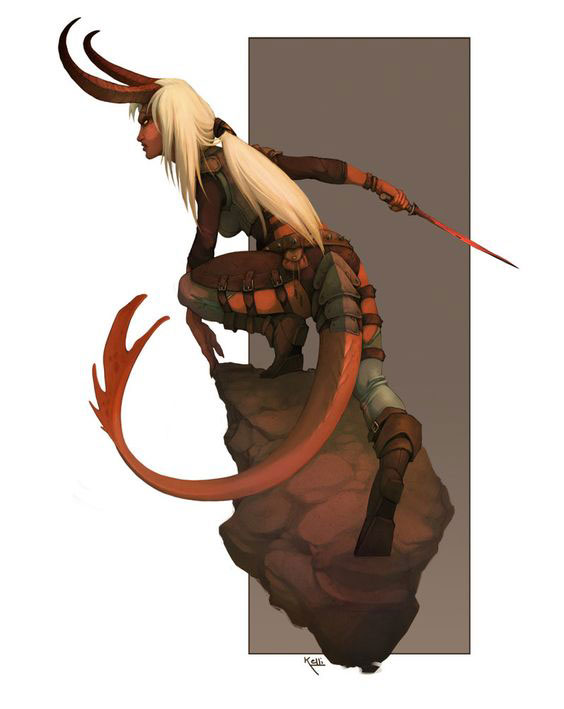
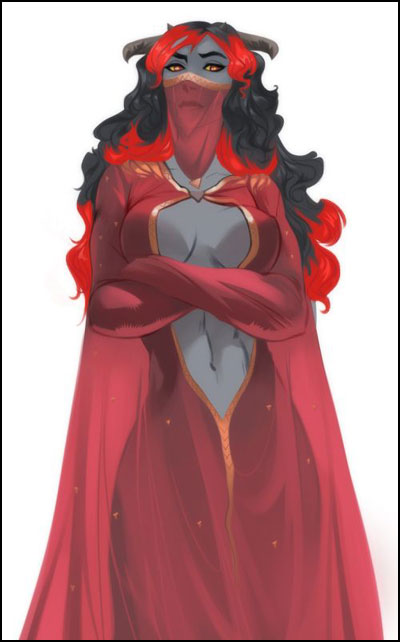
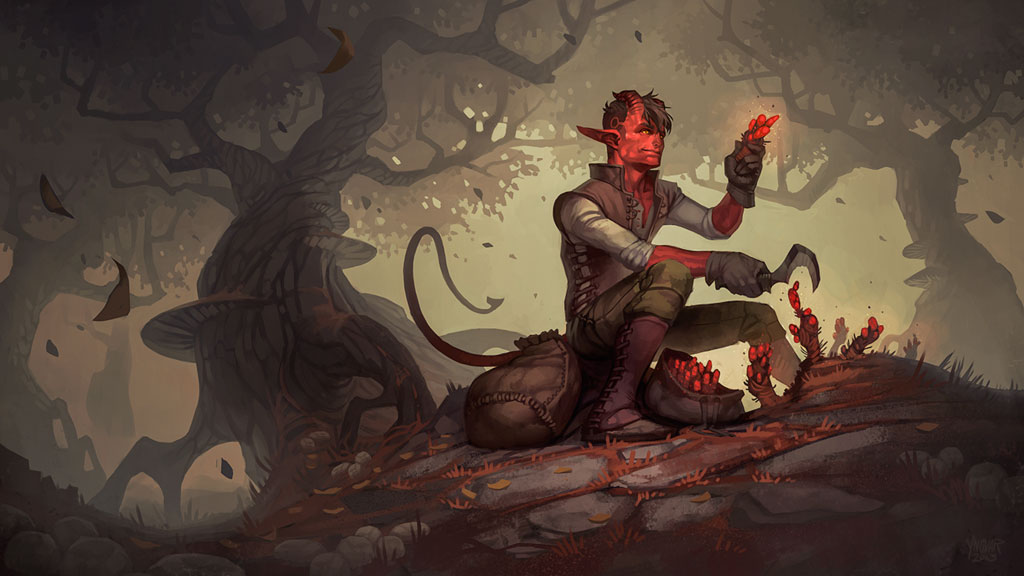
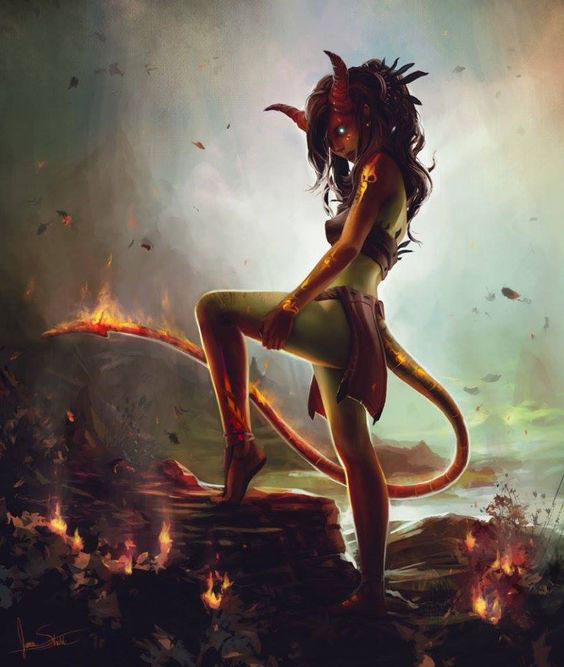
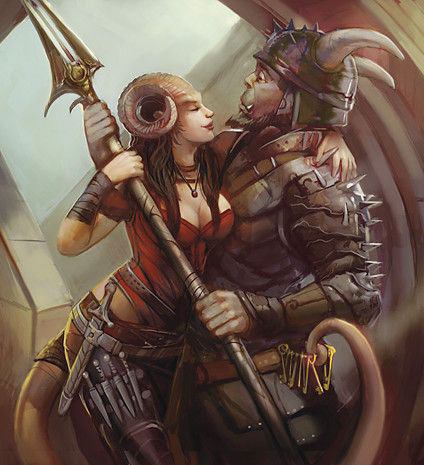

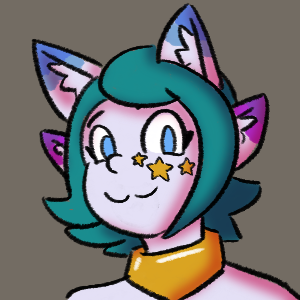


They seem like a very resilient group! The escaped slave aspect reminds me of the Jamaican Maroons, not sure if intentional or coincidence, but maybe you could look into them for inspiration. I loved that you incorporated some kind of psychology of marginalization in the way they live and operate within their community and family. Very interesting take on Tieflings, I see a lot of potential!
I appreciate that, and I will look up the Jamaican Maroons (not educated on them). The history of the world indicates that the Tieflings used to live on the mainland of Abios, but because they were persecuted, they fled to the landmass known as Verchei in the far north. Over time, those Tieflings became the Verchein Tieflings. This is detailed in the Tiefling Race article.